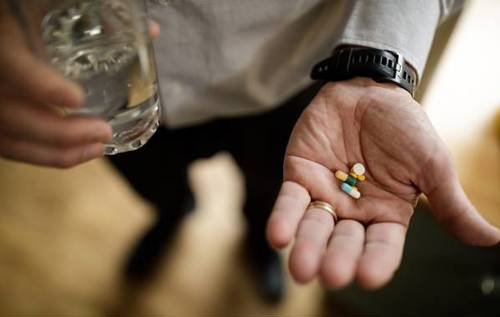How collaborative research is helping us take on arthritis together
04 August 2023
What questions should our researchers answer? And how do we make sure that the research we fund makes a difference to people living with arthritis?
It's a real challenge, but the first step is to make sure that the experiences of people with arthritis inform and guide our research.
One way we’re doing this is by partnering with EPSRC InLightenUs and the EPSRC Our Health programme at the University of Edinburgh.
Together, we’re working on some community-based participatory research (CBPR) that hopes to laser-focus our research, so that we can make a meaningful impact for people with arthritis.
Learn about our research achievements
What is community-based participatory research (CBPR)?

Community-based participatory research is simply when researchers and members of a community work together as equals.
Because, whether you’re a researcher or someone living with arthritis, everyone has their own strengths, experiences and resources that they can bring to the table.
In this project, university students and researchers worked with people living with arthritis.
“The Our Health team uses community-based participatory research as an approach that aims to democratise research,” explains Dr Helen Szoor-McElhinney, Founder and Lead of the EPSRC Our Health programme.
“It allows us to work in strong, equal and productive collaboration with our patient research partners, sharing knowledge throughout the entire research process, in order to meet our shared research goals.”
Get involved
What did the research involve?

It’s no secret that stories are powerful. They help us show what life is really like for people living with arthritis and help us pinpoint the issues that matter most to you.
This project is all about using stories from people with arthritis to guide which topics the community-based research team should study in the future.
"Story telling is a captivating way of conveying research data as it is able to portray the emotional depth and the reality of living with arthritis,” says Sonya Star, Student Research Team Leader. "I think that scientific research often dehumanises patients, viewing them as mere vessels for the disease."
“Storytelling brings the focus back on the people whose lives are impacted by arthritis, which is very important for this type of project."
To kick things off, volunteers shared their experience of living with arthritis and how it affects their day-to-day lives.
In front of them, they found illustrations showing different emotions – from lost and worried, to hopeful and thankful. As they explained their story, the volunteer would touch the emotion cards, which summed up how the experience felt. In research, this is sometimes called emotional touch points (ETM).
Once the researchers had listened to lots of people’s stories, they found key themes or patterns that came up time and time again. In research, this is sometimes called thematic analysis.
What did the research find?

So, what common themes did people with arthritis raise? Here are just a few examples:
- Being diagnosed with arthritis at a young age, or having a delayed diagnosis can cause some people poor mental health
- In the absence of clinical support, peer support is important
- Where people live, affects the healthcare they receive
- A loss of trust in GPs and the treatments offered due to past negative experiences can cause the condition to progress further
- A lack of guidance around safe exercise can lead to poor self-management of arthritis
- Loss of personal identity due to arthritis can lead to poor mental health
- Better pain medication is needed.
To bring these topics to life, the research team then wrote three different character stories, which are based on real people’s experiences. Here is one of those stories:
Seeking Answers
“Emma had always been a hardworking and dedicated student, studying for a degree at the local university while working part-time as a cashier at a nearby supermarket, to earn some extra cash. At first Emma had felt a burning pain in her right hip. The pain kept getting worse. It got to the point where Emma was thinking about quitting her job at the supermarket.
Emma decided to see her GP.
‘I am 25 years old, but I can barely walk, the pain in my hip is so sore. It is getting really hard for me to move around, to get to my job and study through the week,’ she told the GP.
The GP explained that she was far too young to worry about any type of bone condition and that she should rest as much as possible, take pain killers when needed and the trouble should resolve itself with time.
Emma could feel that this wasn’t a simple injury, it was something deeper. Yet, she thought that the doctor knew best. She convinced herself that nothing could seriously be wrong with her at such a young age.
As the months went by, Emma’s pain grew worse, she began to feel it in her feet, ankles and hips. She went to see other doctors but none of them seemed to take her concerns seriously. All she was given was more painkillers. Emma cried herself to sleep, worrying that no one would listen to her. Even her family, who were supposed to support her, couldn’t understand what she was going through.
Eventually, two years later, after struggling through and when Emma’s mental health had started to worsen because of her constant pain and worry, she told her close friend, Jane, about just how low she was feeling. Jane agreed to join her at her next GP appointment. After another round of new tests, the GP told Emma the news she had been dreading, but also suspecting, for a long time: she had arthritis.
‘Arthritis? At my age?!’ Emma exclaimed and her heart dropped, feeling relieved to have some new information but confused and saddened at the same time.
The GP explained that while arthritis is more common in older people, young people can still be affected, and that the lack of a clear and timely diagnosis can lead to poor mental health for some people. ‘If not for your efforts to seek answers, you probably wouldn’t have had a diagnosis until much later.’
With a diagnosis, medication and recommended physiotherapy to manage her symptoms, Emma’s health improved. She was also given details of support groups, which helped Emma connect with other people her age who lived with arthritis. Over the following years, Emma’s life changed for the better. She was able to continue her studies and manage her arthritis with the support of friends and family.
Emma hugged her friend Jane tightly, ‘I can't believe how much better I feel now, thank you for being by my side,’ she said.”
What’s next?
Next, the researchers will collaborate with the Cowrie Scholarship Foundation to work with people who are Black British, Caribbean Black, African Black or from any other Black background, so we can better understand how arthritis affects them.
Together, all these stories will then play a massive role in helping us decide which questions our research should answer in the future.